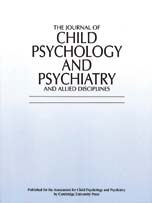Annotation: The Development of Antisocial Behavior: An Integrative Causal Model
Published online by Cambridge University Press: 01 July 1999
Abstract
This annotation presents an integrative model of the origins and development of antisocial behavior during childhood and adolescence. Like all theoretical models, it both summarizes what is known and states hypotheses that go beyond the current data. Our goal is to add to the impetus created by other theories to conduct the critical studies necessary to test models and advance knowledge. The present model offers some new hypotheses regarding precursors to antisocial behavior but seeks primarily to integrate antisocial propensity theories (Gottfredson & Hirschi, 1990) and developmental theories (Loeber, 1988; Moffitt, 1993; Patterson, Reid, & Dishion, 1992). Our model focuses on enduring propensities to antisocial behavior but also places antisocial propensity within a developmental perspective. Like Loeber (1991) and Sroufe (1997), we posit that changing manifestations of problem behavior over the course of the development result from successive transactions of the growing child with changing social environments. As such, roles for person variables, developmental variables, and environment variables are specified, as are interactionsWe use the term "interaction" broadly in discussing the interplay between predisposing variables and social experiences. We have not advanced hypotheses at this point that distinguish between additive, multiplicative, or other joint effects of these classes of variables, but joint effects beyond additive combinations would be most consistent with the intent of our model (cf. Pennington & Bennetto, 1993). among these classes of variables. The age of onset of antisocial behavior is a key element of the present model as the levels of influences from the multiple causal factors vary with the age of onset of antisocial behavior. Because much more is known about antisocial behavior in boys than girls, the present model may be applicable only to boys. As discussed in this annotation, there may be important gender differences that will require different models for girls and boys. Therefore, when sufficient data are available, it will be important to test the applicability of the model to girls.
Information
- Type
- Annotation
- Information
- The Journal of Child Psychology and Psychiatry and Allied Disciplines , Volume 40 , Issue 5 , July 1999 , pp. 669 - 682
- Copyright
- © 1999 Association for Child Psychology and Psychiatry
- 222
- Cited by

